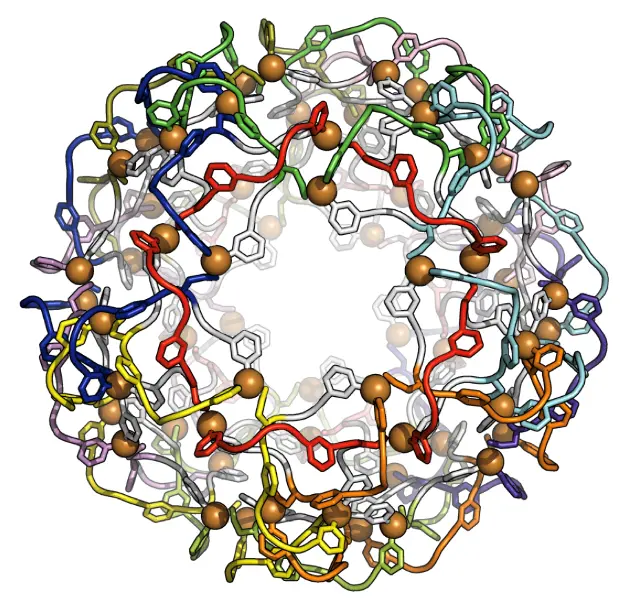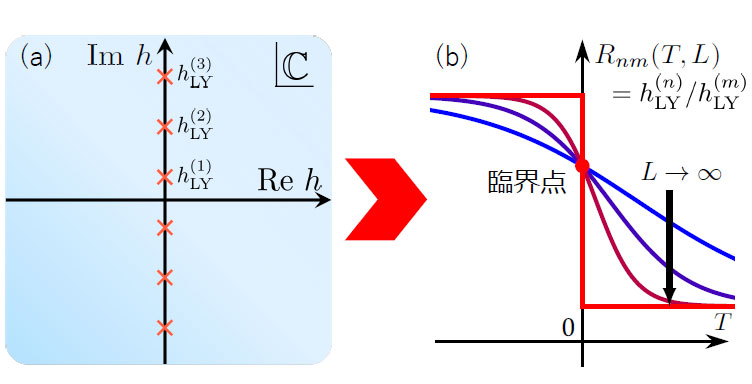2025-05-02 東京科学大学

構築に成功した正十二面体リンクの球殻分子構造
<関連情報>
- https://www.isct.ac.jp/ja/news/i30l7dxc05qr
- https://www.jst.go.jp/pr/announce/20250502/pdf/20250502.pdf
- https://www.cell.com/chem/fulltext/S2451-9294(25)00145-7
M60L60の金属ペプチドからなるカプシド An M60L60 metal-peptide capsid with a 60-crossing woven network
Yuuki Inomata ∙ Sota Oguma ∙ Nao Sagara ∙ … ∙ Michito Yoshizawa ∙ Makoto Fujita ∙ Tomohisa Sawada
Chem Published:May 1, 2025
DOI:https://doi.org/10.1016/j.chempr.2025.102555
The bigger picture
Polypeptide chains undergo folding into diverse protein structures through the formation of secondary structures such as helices and sheets. We have focused on the phenomenon where metal-linked peptide chains fold while freely passing through one another, thanks to the reversibility of coordination bonds. Utilizing this phenomenon, we constructed structures described in knot theory as tetrahedral and cubic links, which correspond to 12- and 24-crossing metal-peptide frameworks, respectively. By further considering knot theory and the geometric constraints of polyhedra, we predicted the structure of a dodecahedral link with 60 crossings and successfully realized it in this study. The newly synthesized dodecahedral link is a gigantic M60L60 capsid structure formed through the self-assembly of 60 metal ions (M) and 60 peptide ligands (L). This structure revealed the allowance of previously forbidden peptide folding (threading), enabling the observation of hidden folding patterns of peptide chains that have not been found in nature. This discovery significantly expands the foundation of peptide engineering and is expected to have profound impacts on various fields, including molecular self-assembly, materials chemistry, and mathematical theories.
Highlights
- Self-assembly of an M60L60 capsid structure over a 6 nm diameter
- A 60-crossing dodecahedral spatial graph topology
- A Goldberg T = 3 polyhedron consisting of trefoil knot panels
- A geometrical control strategy for the chemical construction of gigantic capsids
Summary
Controlling topologies of highly entangled molecular strands from scratch has long been challenging. For its realization, repeated cycles of prediction, considering the geometrical constraints behind molecular self-assembly, and synthetic trial-and-error are crucial. Here, we report the chemical construction of an unexplored topological molecule—a dodecahedral link with 60 crossings. This structure, predicted through theoretical considerations, represents an advancement from previous tetrahedral and cubic links. The resulting capsid-like structure, measuring 6.3 nm in size, has an M60L60 composition (M, metal; L, ligand), formed through the folding and assembly of 60 trivalent Cu+ ions and 60 tritopic pentapeptide ligands. This entangled topological framework formed a 4.0 nm-sized inner cavity (∼34,000 Å3). The 60-crossing dodecahedral link topology was, in another way using both knot and graph theories, also characterized as a Goldberg T = 3 polyhedron (T, triangulation number) consisting of trefoil knot panels, providing a new roadmap to further giant capsid structures.



